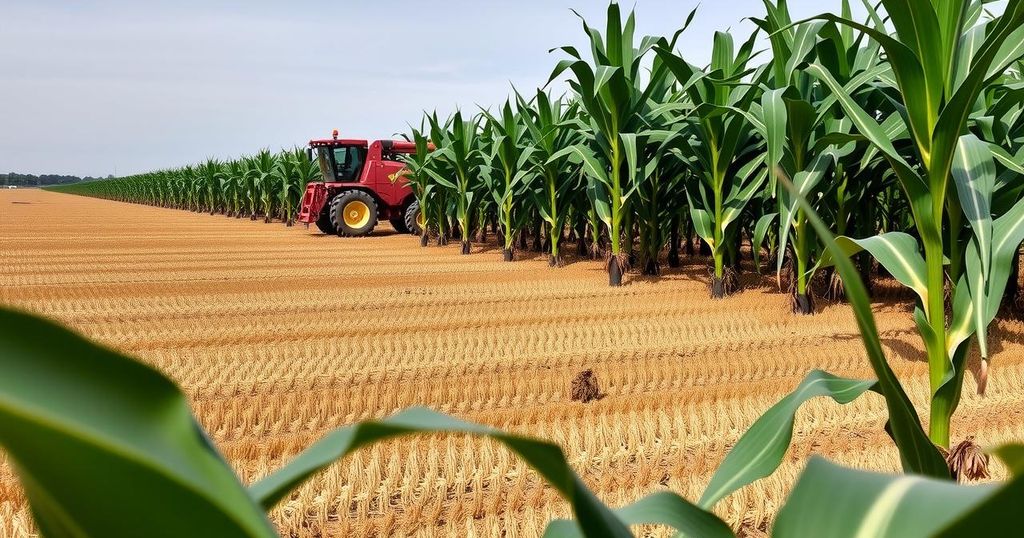Argentina’s Buenos Aires Grains Exchange has revised its planting area estimates for the 2024/25 season, increasing corn acreage by 300,000 hectares to 6.6 million while decreasing soybean planting by 200,000 hectares to 18.4 million hectares due to lower prices. As of now, farmers have planted 84.6% of the soybean area and 80.9% of the corn fields, with wheat harvest nearly complete at 18.6 million metric tons.
On Friday, the Buenos Aires Grains Exchange incrementally raised its corn planting area estimate, projecting it at 6.6 million hectares, an increase from the earlier estimate of 6.3 million hectares. This revision was classified as a “correction” to the previous forecast. In contrast, the projected soybean planting area has been adjusted downwards to 18.4 million hectares, representing a decrease of 200,000 hectares. This decline is attributed to lower soybean prices, prompting farmers to explore alternative crops. The report noted that Argentine farmers have already planted 84.6% of the intended soybean acreage and 80.9% of the corn fields. Furthermore, the exchange reported that approximately 88.5% of the wheat fields have been harvested, with a total wheat harvest anticipated at 18.6 million metric tons.
Argentina is recognized as a significant player in the global agricultural market, particularly as one of the top exporters of corn and soy products. The balance between corn and soybean planting is crucial for farmers as these crops compete for land, especially amid fluctuating market prices. The Buenos Aires Grains Exchange’s data reflects ongoing adjustments that farmers must make in response to economic conditions, impacting sowing decisions for the 2024/25 season.
In summary, the Buenos Aires Grains Exchange has adjusted its planting area estimates for corn and soybeans in response to market dynamics and agricultural trends. With an increase in corn acreage and a decrease in soybean fields, Argentine farmers are reacting strategically to current price pressures. As the wheat harvest approaches completion, these shifts highlight the adaptability of the agricultural sector amidst changing economic landscapes.
Original Source: www.brecorder.com






